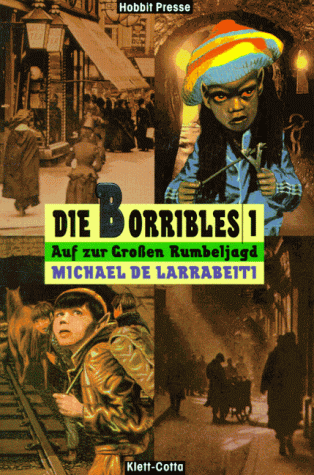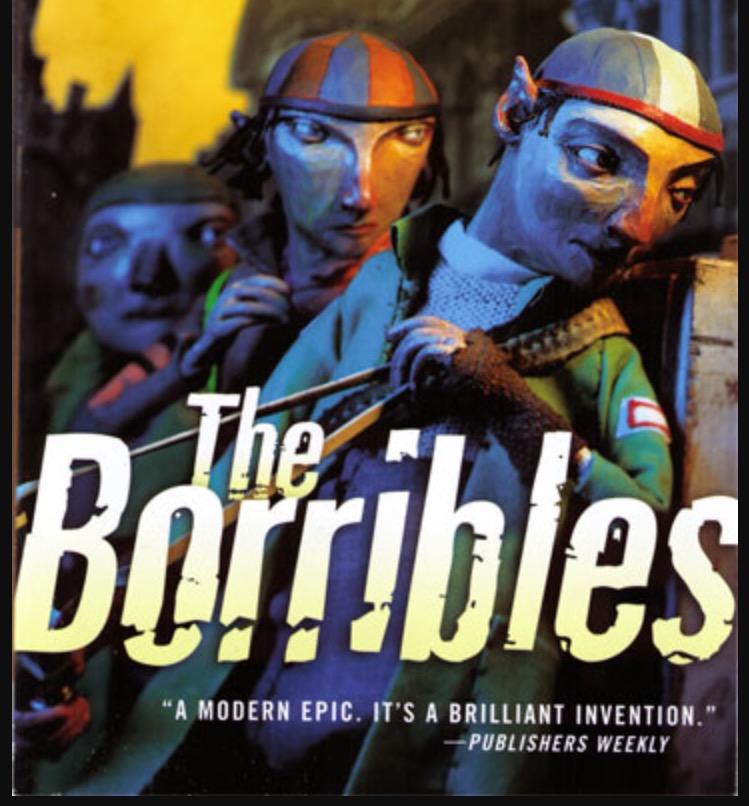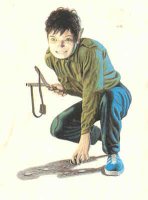Some time ago Londonist website ran a poll to choose the best London novel of all time. I’d heard of most of the top ten and had even read a few of them, but I was taken by surprise by the winner. The Borribles? Never heard of it/them. The author, Michael de Larrabeiti, was also unknown to me. It turned out that a bunch of Borribalista’s had rigged the vote and coerced the book to the top of the Londonist chart. I made a mental note to investigate further. A first quick look on the web and I could see they were books aimed at early to mid teenagers, written in the 1970’s and reasonably well reviewed. It turned out that they were partly set in my South London neighbourhood. I asked at my local bookshop but the shop assistant had not heard of the books and couldn’t find them in their ordering system. Similarly my local library’s children’s section drew a blank. The very nice local librarian had neither heard of the books nor could find them anywhere in the library records. I tracked the book down on the internet (of course) and ordered myself a copy. And…..well, I simply can’t work out why this series of books is not huge.
The Borribles are strange feral youths that exist in and are loyal to the old working class neighbourhoods of central(ish) London including Battersea, Wandsworth, Hoxton and Hackney in which they live. Borribles aren’t born but are made. They start out as normal children but turn into Borribles after a “bad start” in life leads to them becoming “unmanageable” in normal society. So they exist in the margins of life, squatting in the derelict buildings that were still plentiful in the 1970’s, stealing from street markets to feed themsleves and living in tribal and fiercely territorial gangs. Over time the kids sprout pointed ears – the key characteristic of a Borrible – and whilst their ears are pointed they never grow up. If that sounds a bit twee and Peter Pan-like, their foul language and tendency to take on and kill their enemies, including the police, with steel catapults marks them down as more like characters out of a Richard Allen book such as Skinhead or Suedehead. Certainly the Borribles occupy the same sort of harsh unsentimental London that those skinheads did. If the police get hold of them they clip the Borribles’ ears ( a clip round the earhole!) and that turns them back into children who proceed to age and fade into adulthood.

De Larrabeiti wrote three Borribles adventures which achieved some critical success in the UK, US and in Germany (see the sleeve above). The first of the books was published in 1976 and describes a London that feels very different to how it is now. People have less. Anger is in the air. Punk rock is not a million miles away. Sinister rag and bone men still ride round on horses and carts. Battersea is a rough and ready neighbourhood. The first book opens with the Borribles under attack from strange creatures called the Rumbles of Rumbledon who are plummy voiced representations of the dreadful middle class intent on gentrifying the Borribles beloved Battersea and then pushing further into working class London. The Borribles respond by sending an elite task force to the home of the Rumbles to cause critical and brutal damage to their adversaries. The first book is the story of that adventure.
You might have guessed that the Rumbles are a thinly veiled reference to the Wombles of Wimbledon Common. The Rumbles can’t pronounce their “r’s” properly; they come out as “w’s”, hence Rumble sounds like Wumble; Rumbledon becomes Wumbledon. Whereas Borribles are rough and ready, Rumbles are posh and arrogant and talk using old fashioned phrases like “old bean” and “spiffing”. Clearly De Larrabeiti took extreme offense at the Wombles – and the middle classes that they represent – because the violence that he has The Borribles inflict upon the poor Rumbles is truly blood-curdling.
I loved the books because their stories take place on the streets where I now live and I can recognise some of the pubs and churches. Even a shop or two remain from those days. The overall nature of the area however has changed beyond compare. Contrary to what happens in the books however, in truth it is the Rumbles (& not the Borribles) who won because most of the formerly working-class “cockney” areas that are described are now full of private prep schools, 4×4’s driven by yummy mummies and chi-chi coffee shops. What is interesting is how these books strip back that veneer of gentrification to show how the areas used to be and suggest something of their essential nature.
I was genuinely astonished out how bloody and exciting the tales were. The set piece battles are gory and the morality of the characters is harsh and pays no lip service to political correctness. These stories feel as though they are taking place in a real and uncompromising world despite the conceits of the Rumbles, who are like huge rats that walk on hind legs, and the Borribles’ ears. In this mix of fantasy and reality they share something with the books of Philip Pullman. I suspect Pullman has read and digested them. The Gobblers of His Dark Materials are related to the Borrible abductors Dewdrop and Ernie.
Although the first book in the trilogy received critical success it did not sell in huge quantities and from my limited research has been largely forgotten, at least in the locality in which it was created. It may well be because of the violent subject matter. This first book was followed by two more: The Borribles Go for Broke (1981) and Across the Dark Metropolis (1986). Both books refused to tone down their contents and their continuing anti-police message jarred with the mainstream world of children’s books and were particularly out of step following the riots in Brixton and Tottenham. De Larrabeiti struggled to find a publisher for the third book after Collins, the original publisher withdrew from publication at the last moment. He never wrote about the Borribles again.
You can follow people purporting to be The Borribles on twitter. How very modern….

